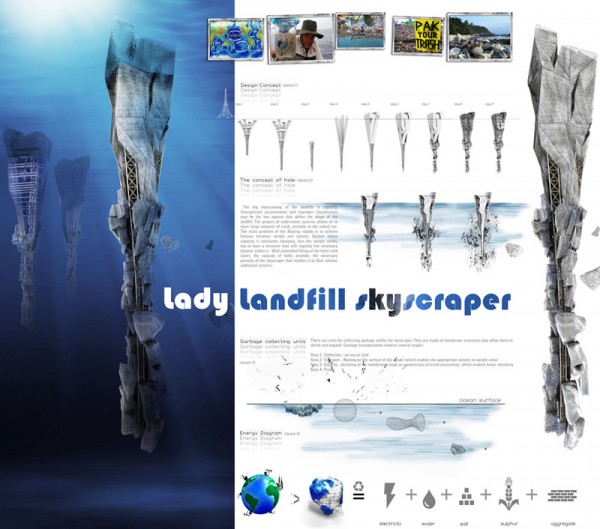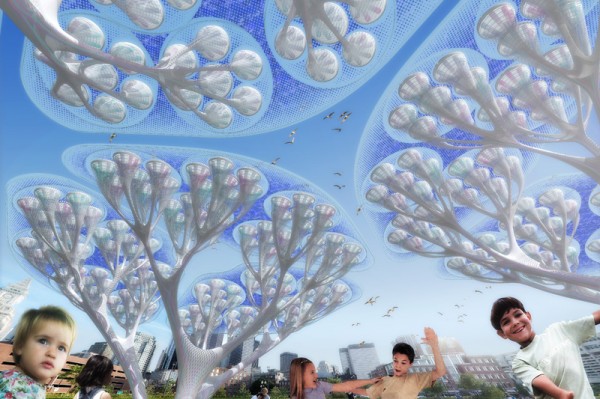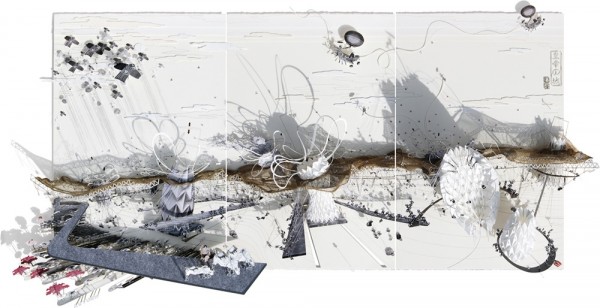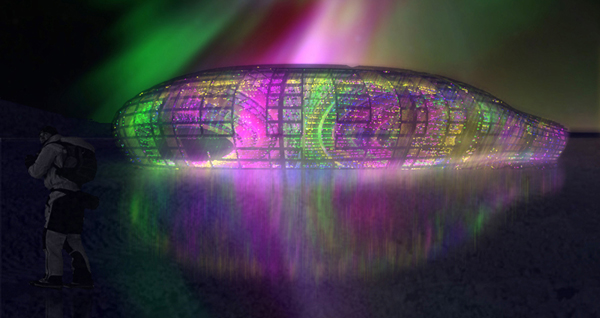Honorable Mention
2011 Skyscraper Competition
Milorad Vidojević, Jelena Pucarević, Milica Pihler
Serbia
The Great Pacific Garbage Patch is a pile of plastic floating in the northern part of the Pacific Ocean. The San Francisco Chronicle claims that the patch now weights more than 3.5 million tons, 80% of which is plastic waste that reaches more than thirty meters in depth. This area of the Pacific Ocean is a relatively calm region that causes the accumulation of floating garbage in big piles. Its removal will cost billions of dollars and no country claims responsibility.
This proposal consists of a series of underwaterscrapers, floating islands that will be used to remove and recycle the garbage patch. These are self-sustained structures organized by function hierarchy with four communication cores that connect three main programs – collectors at the bottom, recycling plant in the middle levels, and housing and recreational levels atop. Read the rest of this entry »























